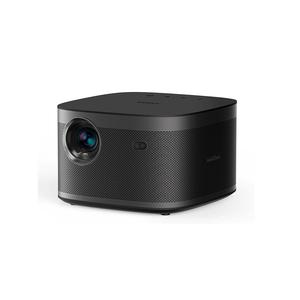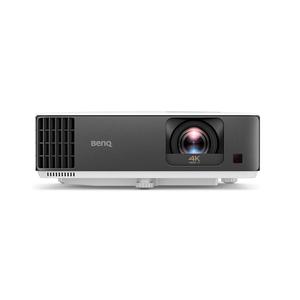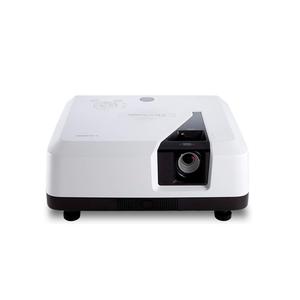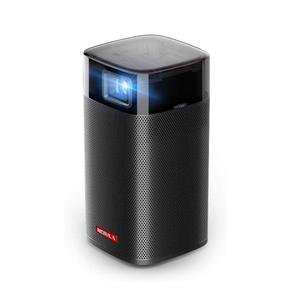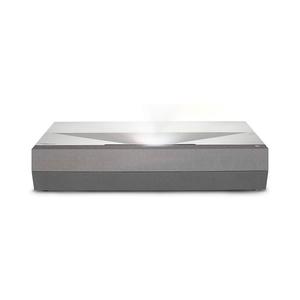What is Projector Contrast Ratio
Picture this: you're settling into your cozy home theater, eagerly awaiting the start of your favorite movie. As the lights dim and the room transforms into a cinematic haven, the quality of your projector becomes the gatekeeper to a truly immersive experience. One crucial factor that can make or break your viewing pleasure is the projector's contrast ratio. But what exactly is projector contrast ratio, and why does it matter?
In this blog post, we will delve deep into the world of projectors and explore the significance of contrast ratio. Join us as we demystify this fundamental aspect of projection technology, helping you understand how it impacts your visual experience. We'll explore the science behind contrast ratio, its role in delivering vivid and lifelike images, and the ways it can elevate your enjoyment of movies, games, and presentations.
So, whether you're a home theater enthusiast, a professional presenter, or simply someone curious about the inner workings of projectors, get ready to unlock the secrets of projector contrast ratio and discover how it can enhance your viewing pleasure to new heights. Are you ready to embark on this journey of projection enlightenment? Let's dive in!
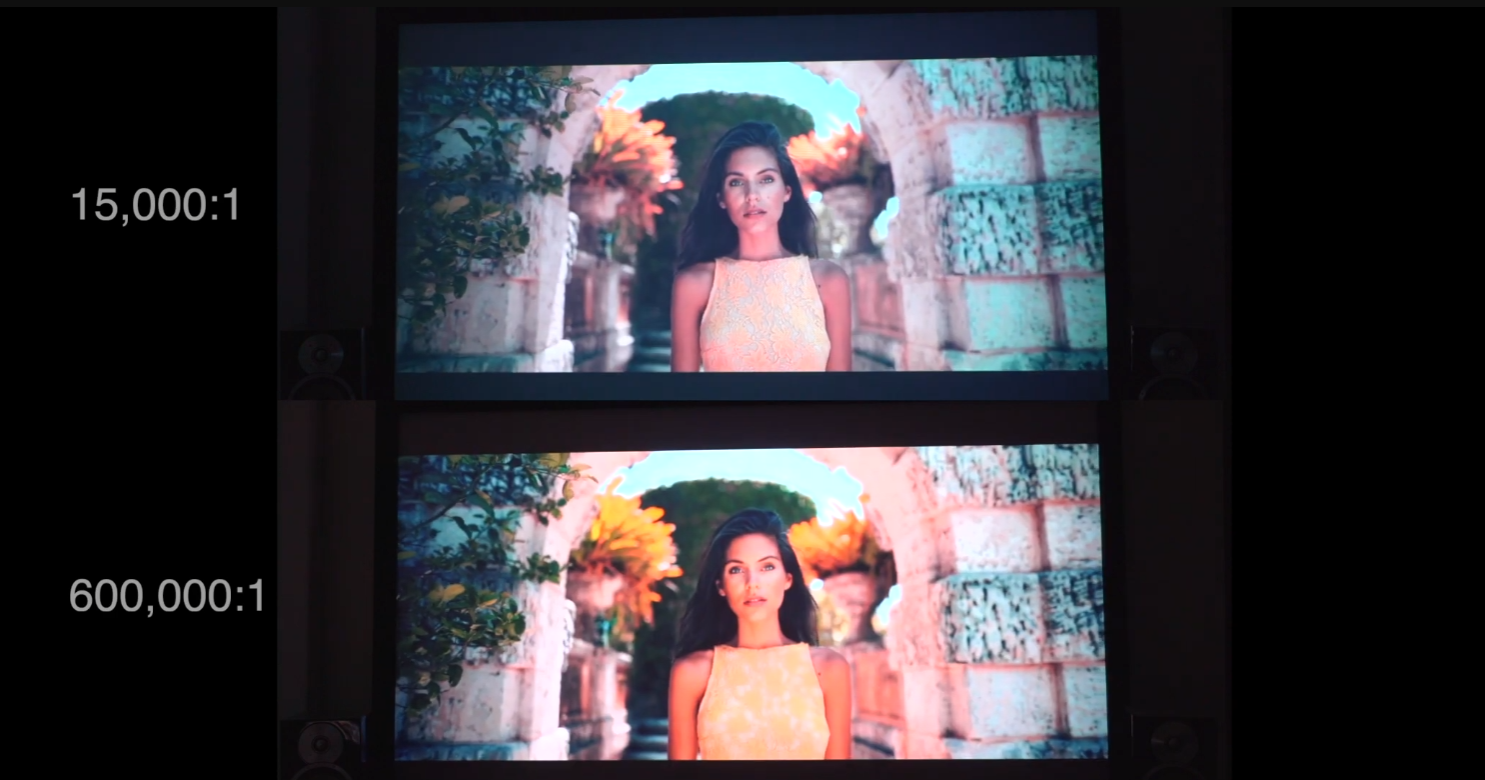
In short: projector contrast ratio refers to the difference between the brightest white and the darkest black that a projector can display. It is a crucial factor in determining image quality and the level of detail and depth in projected content. A higher contrast ratio signifies a greater distinction between light and dark elements, resulting in more vivid and lifelike images. Different use cases, such as home theater, gaming, business presentations, and classrooms, have varying recommended contrast ratio ranges to optimize the viewing experience. Understanding projector contrast ratio helps in selecting the right projector for specific needs and maximizing visual impact.
- What Exactly is Contrast Ratio
- How to Measure Projector Contrast Ratio
- What is The Optimal Contrast Ratio
- FAQ About Projector Contrast Ratio
What Exactly is Contrast Ratio
Contrast ratio, in the context of projectors, refers to the difference between the brightest white and the darkest black that a projector can produce. It is a measure of the projector's ability to display a wide range of shades and colors, resulting in a more dynamic and visually appealing image.
Typically expressed as a numerical ratio (e.g., 2000:1 or 10,000:1), the first number represents the brightness of the white image, while the second number represents the darkness of the black image. For instance, a contrast ratio of 2000:1 means that the white image is 2000 times brighter than the black image.
A higher contrast ratio signifies a greater distinction between light and dark elements, leading to improved image depth and detail. It allows for a more realistic and immersive visual experience by enhancing shadow details, color vibrancy, and overall image quality. Simply put, the higher the contrast ratio, the more visually striking and captivating the projected content will appear on the screen.
In the upcoming sections, we will explore the significance of contrast ratio in different scenarios and delve into the factors that affect its performance. So, let's continue our journey into the fascinating world of projector contrast ratio and discover how it influences the way we perceive images.
Perceived Contrast Ratio
Perceived contrast ratio refers to how the contrast ratio is perceived by the viewer. It takes into account various factors, including the viewer's visual perception and the overall viewing environment. Perceived contrast ratio can differ from the measured or advertised contrast ratio due to subjective factors that affect how the human eye perceives contrast.
Here are a few key points to understand about perceived contrast ratio:
-
Viewing conditions: The lighting conditions, ambient light, and viewing angle can impact how the contrast ratio is perceived. Factors such as reflections, glare, and viewing distance can affect the perceived contrast.
-
Visual sensitivity: Each individual has a different visual sensitivity to contrast. Some people may be more sensitive to subtle differences between dark and light areas, while others may require higher contrast to perceive the same level of distinction.
-
Content and image quality: The content being displayed and the overall image quality can influence the perceived contrast. Well-shot, high-quality content with proper color grading and contrast adjustments can enhance the perceived contrast ratio.
-
Display settings: The settings on the projector or display device can affect the perceived contrast ratio. Adjusting settings like brightness, contrast, and gamma can impact how the image appears to the viewer.
It's important to note that perceived contrast ratio is subjective and can vary from person to person. Manufacturers may provide specifications based on their measurements, but the actual perception of contrast will depend on individual factors and viewing conditions.
To optimize the perceived contrast ratio, consider the following steps:
- Adjust the display settings on the projector or display device to suit your preferences and the viewing environment.
- Optimize the lighting conditions in the room to minimize external light sources and reduce glare.
- Choose content that is well-suited for the projector and has been properly calibrated for contrast and color accuracy.
Actual Contrast Ratio
Actual contrast ratio, also known as measured contrast ratio, refers to the numerical measurement of the contrast ratio that is obtained through technical testing and evaluation of a projector or display device. It represents the quantifiable difference between the brightest white and the darkest black that the projector or display can produce.
Here are a few key points to understand about actual contrast ratio:
-
Measurement methodology: Actual contrast ratio is typically measured using specific testing methods that involve displaying a series of white and black patterns and measuring the luminance levels. The measurements are taken in controlled environments using specialized equipment to ensure accuracy.
-
Native contrast ratio: The native contrast ratio refers to the inherent contrast performance of the projector or display device without any enhancements or adjustments. It is determined by the characteristics of the display technology used, such as the panel type and backlighting system.
-
Dynamic contrast ratio: Some projectors or displays feature dynamic contrast ratio, which is a contrast enhancement technique that adjusts the brightness and darkness levels dynamically based on the content being displayed. Dynamic contrast ratio measurements may vary depending on the specific conditions and algorithms used.
-
Advertised contrast ratio: Manufacturers often provide a contrast ratio specification for their projectors or displays, which is typically the highest achievable contrast ratio under ideal conditions. It's important to note that advertised contrast ratios can sometimes be exaggerated or measured using non-standardized methods, so it's recommended to rely on actual measured contrast ratio values for accurate comparisons.
When considering the actual contrast ratio of a projector or display device, it's essential to understand that higher contrast ratios generally result in more distinct differences between dark and light areas, leading to improved image depth and detail. However, the actual contrast ratio experienced by viewers can also be influenced by various subjective factors, as discussed in the previous response.
Just to let you know, if you're on the hunt for impressive projector models, these are our top six picks for 2024:
- Excellent 4K image quality
- Stylish and premium design
- Affordable price
- Intelligent screen adaptation technology
- Powerful and high-quality Harman Kardon speakers
- Android TV 10.0 with a rich selection of applications and functions
- Short-throw projection ideal for small spaces
- 4K resolution with low input lag
- Android TV integration
- Compatible with major gaming consoles
- Easy setup with flexible image adjustment features
- 4K UHD resolution with 3,300 lumens
- Long-lasting light source up to 20,000 hours
- HDR compatibility and SuperColor technology
- Flexible connectivity with HDMI, USB, and more
- 3D Blu-ray ready with 360-degree orientation
- Decent 480p image quality with support for HDR10
- Simple and compact design
- Portability and long battery life
- Dolby Digital Plus and Dolby Atmos
- Android 7.1 with sufficient choice of apps and features
- Highly portable with 180-degree rotation
- Auto Leveling, Focus, and Keystone
- Access to a wide range of smart entertainment options
- Dedicated Gaming Hub
- Immersive 360-degree audio with external audio connectivity options
- Ultra-short throw design
- Laser light source for long-lasting and bright performance
- Built-in soundbar with Dolby Digital 2.0
- Smart TV interface with voice control and streaming apps
How to Measure Projector Contrast Ratio
There are two main methods commonly used to measure projector contrast ratio:
-
On/Off Contrast Ratio: This method measures the contrast ratio by comparing the luminance of the projector's brightest white image to the luminance of its darkest black image. Here's how it is typically performed:
- The projector displays a completely white image, and the luminance (brightness) of the white image is measured.
- The projector then displays a completely black image, and the luminance of the black image is measured.
- The ratio between the luminance of the white image and the luminance of the black image provides the on/off contrast ratio.
-
ANSI Contrast Ratio: The ANSI (American National Standards Institute) contrast ratio is a more comprehensive measurement that takes into account multiple measurements at different points on the screen. It involves the following steps:
- A specific test pattern with alternating black and white rectangles is displayed by the projector.
- The luminance is measured for both the white and black rectangles, as well as the ambient light level.
- Multiple measurements are taken across the screen, including different areas and angles, to account for variations.
- The ANSI contrast ratio is calculated by averaging the contrast ratios from the multiple measurements.
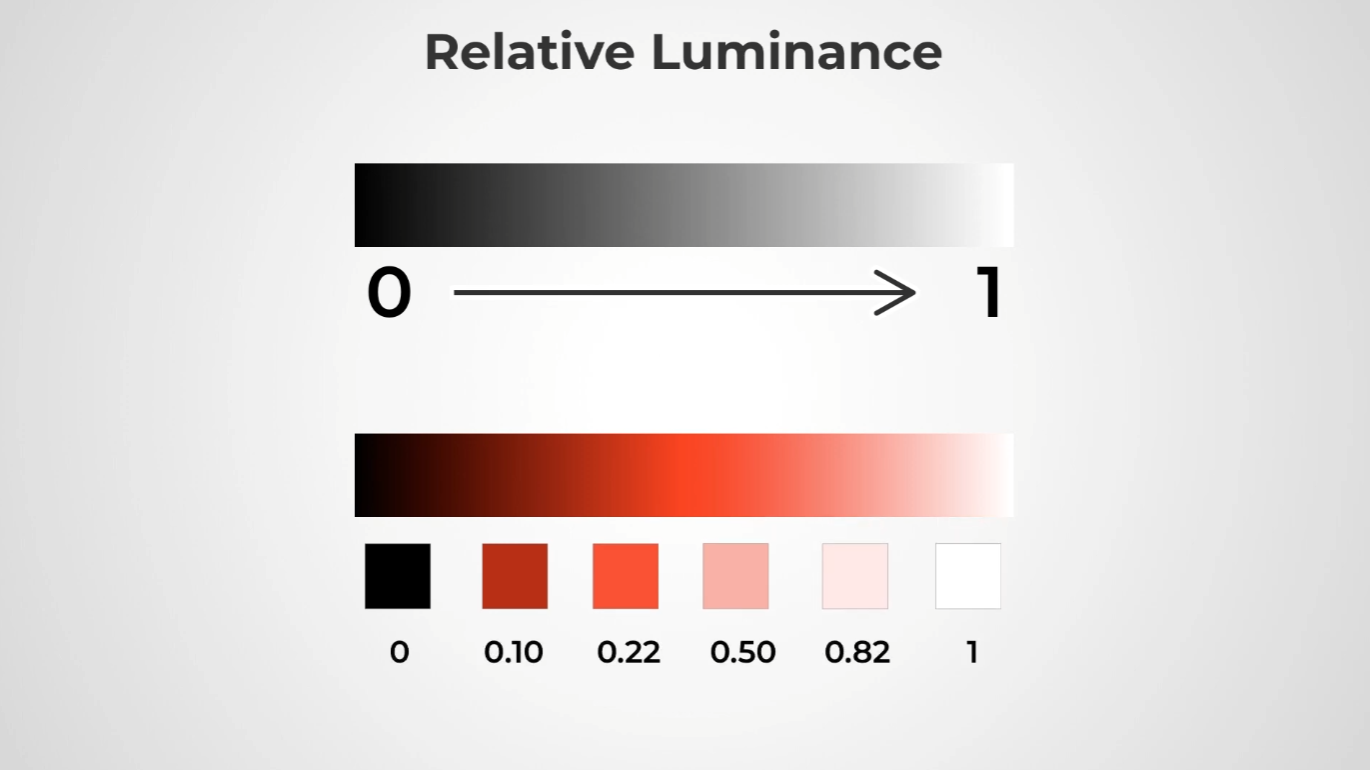
It's important to note that different manufacturers and testing laboratories may use variations of these methods, which can result in slightly different contrast ratio values. Additionally, the specifications provided by manufacturers may sometimes refer to native contrast ratio (without enhancements) or dynamic contrast ratio (with enhancements), so it's important to consider the specific context and measurement methodology used when comparing contrast ratios across different projectors.
What is The Optimal Contrast Ratio
Here's a comparison table outlining the general range of contrast ratios considered good for different projector use cases:
| Use Case | Recommended Contrast Ratio Range |
|---|---|
| Home Theater | 2000:1 and above |
| Gaming | 1500:1 and above |
| Business | 1000:1 and above |
| Classroom | 1000:1 and above |
| Presentations | 1000:1 and above |
| Outdoor/Portable | 500:1 and above |
Please note that these are general recommendations and the optimal contrast ratio can vary based on individual preferences, viewing conditions, and the specific content being displayed. Higher contrast ratios generally result in more vibrant and lifelike images, but they may not always be essential depending on the specific use case and the viewer's expectations.
It's worth mentioning that contrast ratio is just one aspect of image quality, and factors like resolution, color accuracy, and brightness also contribute to the overall viewing experience. So, when selecting a projector, it's important to consider a combination of these factors to ensure the best possible visual performance for your intended use.
FAQ About Projector Contrast Ratio
What is the ideal contrast ratio for a home theater projector?
For a captivating home theater experience with rich blacks and vibrant colors, a contrast ratio of 2000:1 or higher is recommended. This higher contrast ratio helps deliver more depth and detail in dark scenes, enhancing the overall cinematic immersion.
Can I use a business projector for my home theater setup?
While business projectors generally have lower contrast ratios compared to home theater projectors, they can still provide satisfactory results depending on your viewing preferences and the lighting conditions in your home theater. Look for business projectors with a contrast ratio of 1000:1 or higher for decent image quality.
Does contrast ratio affect gaming performance?
Yes, contrast ratio plays a role in gaming visuals. A higher contrast ratio, preferably 1500:1 or above, allows for better differentiation between light and dark areas in games, enhancing the overall visual clarity and immersion.
Is contrast ratio important for presentations in a well-lit room?
In well-lit environments, contrast ratio becomes even more crucial as it helps combat the ambient light and maintain image visibility. Look for projectors with a contrast ratio of 1000:1 or higher for effective presentations in such settings.
Can a classroom projector with lower contrast ratio still provide good visibility?
Classroom projectors often need to handle ambient light and may prioritize brightness over contrast. While a higher contrast ratio is desirable, a classroom projector with a contrast ratio of 1000:1 or above, coupled with sufficient brightness, can still deliver clear and legible content.
Are there projectors specifically designed for outdoor or portable use?
Yes, there are projectors designed for outdoor or portable use. These projectors often prioritize portability and versatility over contrast ratio. While a contrast ratio of 500:1 or higher is desirable, outdoor or portable projectors may have different trade-offs and features such as increased brightness to handle outdoor lighting conditions.
